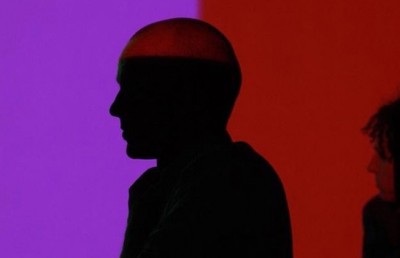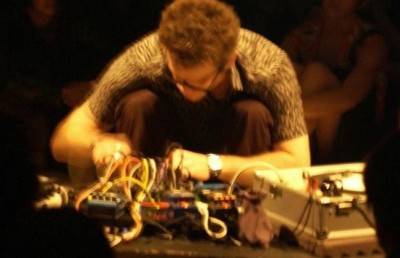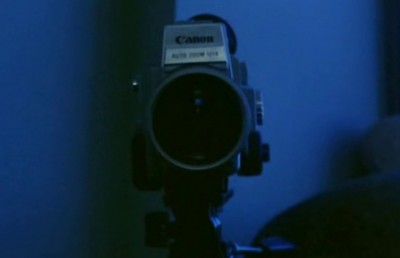Leila
Dariush Mehrjui's Post-Revolution Masterpiece
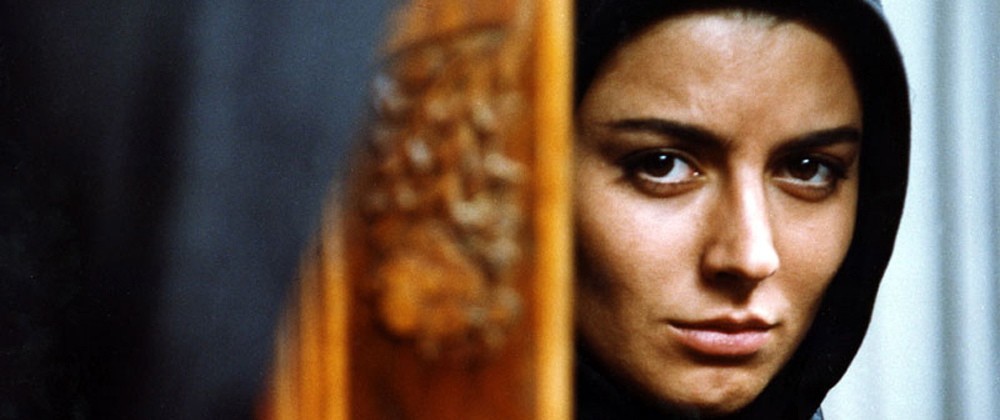
While the names of Mohsen Makhmalbaf, Abbas Kiarostami, Jafar Panahi, and Majid Majidi may be more familiar to the film festival goer, their colleague Dariush Mehrjui stands equally tall as a vital presence in contemporary Iranian cinema, and, as importantly, in the transition from pre to post-Revolution Iranian cinema. Unlike the latter directors, Mehrjui received his university training in the West, enrolling in cinema at UCLA in 1959 before switching his major to philosophy after being disillusioned with the approach to film in the department. As Mehrjui states, “University professors under the influence of American Cinema, that is the cinema of Hollywood, had a grudge against European and art cinema” (Film International 30-31, p. 69). It is no coincidence then that it was Mehrjui who made what is now seen as the first important Iranian art film, The Cow (1969). The film is an uncompromisingly bleak study of the effect that the death of a village’s singular cow has on its owner and the village community. The film, which many see as the beginning of the Iranian New Wave, initiated Mehrjui’s lifelong battle with Iranian censorship, one which, ironically, Mehrjui has fought with both the Shah and the post-Revolution Fundamentalist Islamic Republic. Although Mehrjui’s films are, culturally speaking, Iranian through and through, there is much that sets his films apart from contemporary Iranian cinema. For example, there is the Western intellectual influence which we can see in the several authors he has adapted or liberally borrowed from (Ibsen, Rimbaud, J D Salinger). Also, Mehrjui rarely features children as protagonists and his films lack the particular brand of reflexivity which marks so much of recent Iranian cinema.
A little over a decade into the post-Revolution period Mehrjui began making films that centered on strong female characters. The first of these is Banoo (1992, known as The Lady in English), about a woman who, after suffering an emotional setback, allows a group of struggling neighbors to move into her mansion. The house guests, however, try to take advantage of the situation and behave terribly. Such a negative depiction of the working class caused the film to be banned for several years by the Islamic Republic. This was followed by a trilogy of films centered on female protagonists: Sara (1993), Pari (1995), and Leila (1997). The latter film is, in my opinion, Mehrjui’s post-Revolution masterpiece. In it Mehrjui brings together all the elements which have marked his career up until that point: an interest in philosophical-moral issues, the fingerprint of a Western-based education in his approach to gender and aesthetics, the formal qualities of the art film, and a controversial subject matter.
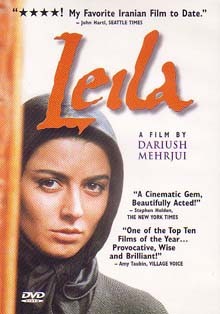
The subject matter of Leila grows out of the age old struggle between tradition and modernity. On the surface, young, newlywed couple Reza (Ali Mosaffa) and Liela (Leila Hatami) are paradigms of modernity: university trained, literate, and happily shackled by the comforts of technology (car, cell phone, television, video). But all of this surface modernity stands little chance against the force of tradition when it comes in the human form of Liela’s conniving mother-in-law (Jamileh Sheikhi), who does her all to undo her son’s blissful marriage when she learns that her daughter-in-law is infertile. The mother-in-law from hell conspires by every means in her power to convince her son to take a second wife who can bear him the child to continue the family lineage (Reza is her only son and polygamy is legal in Iran). While Reza tells Leila that he does not care about having a child and is content with his life as it is because he loves her, he is unaware of his mother’s solitary visits to Leila where she tells him otherwise: that Reza loves children and desperately wants one. Mehrjui adds to the social complexity of the situation by never revealing whether what the mother-in-law says is true or just emotional extortion on her part. Leila caves into her mother-in-law’s wishes and accepts that Reza take a second wife, although her emotional state and her interior voice-over monologues tell us otherwise. The film slowly and subtly displays how the once impenetrable love and resolve of this young couple unravels like delicately falling petals from a red rose (an apt metaphor given the film’s symbolic use of red).
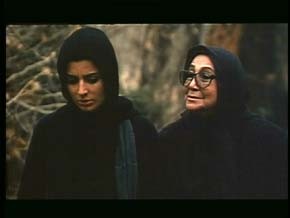
Leila and her ‘mother-in-law from hell’
Mehrjui shows his cards in the opening scene, where he cuts abruptly from a realistic, five and-a-half minute scene of the outdoor dinner party where Leila first met Reza (as she tells us in voice-over), to a garishly red-filtered close-up of Leila already married to Reza. Mehrjui will continue to use these red-tinged images as transitional devices, something he probably picked up from Bergman’s Cries and Whispers.
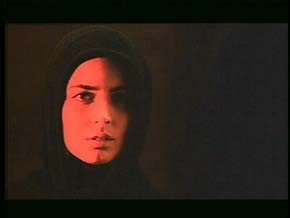
Leila
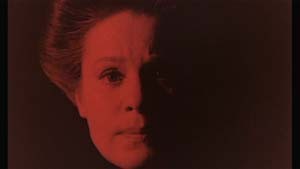
Cries and Whispers
Mehrjui sets the next important plot moment again in an idyllic outdoor setting during a family picnic. As Leila and her mother-in-law walk around a pond the mother-in-law asks Leila that she be generous and allow Reza to take a second wife. In this confined setting, with all the pressure of traditional matriarchy upon her, Leila agrees. It is telling and fitting within the film’s (visually) dark, conspirational tone that this important family decision is taken by two women alone and that all the men, Reza, the fathers, brothers, and uncles, appear to have no say in the decision. But while Leila’s actions are in keeping with tradition, her voice-over tells us another story, one in which she abhors the idea of sharing Reza, the man she loves, with another woman. Reza does stand up to his mother and tells her not to interfere, but this occurs off-frame, rendered to us through a telephone talk between Leila and a friend. And Reza’s victory is short lived, as his mother visits Leila moments after the phone conversation to hammer at Leila the belief that Reza does indeed crave a child, even if he tells her otherwise. Again Mehrjui frames an important moment with the two women alone, which adds to the conspirational tone and subtly suggests that the mother-in-law’s actions are egotistical rather than purely social/cultural (realizing of course how closely intertwined they are). The duality between Leila’s apparent surface acceptance of tradition and her internal defiance is suggested again formally in the next scene, where Mehrjui’s rapid cutting of Leila clearing the kitchen of the food she was set to prepare for dinner relays her anger to us. She then breaks the pearl necklace her mother-in-law gave her as a subtle form of bribery and the camera cuts to successive close-ups of the pearls falling into the bathroom sink and floor. The way the falling pearls breaks the tension recalls a similar moment in Sternberg’s Morocco where Dietrich snaps the pearl necklace given to her by her rich suitor Adolph Menjou. In both cases the necklace represents societal confinement and pressure (metaphorical shackles). Like Dietrich, who ultimately chooses true love (legionnaire Gary Cooper) over social status (Menjou), Leila’s breaking of the necklace represents a powerful act of defiance.
As a Westerner viewing Iranian films one is always guarded about making social and political assumptions, especially where gender issues are concerned, since it makes little sense to apply our own academic viewpoints on a culture with different values and belief systems. But the first time I had seen Leila I was struck, above all, by its forceful female protagonist, and viewed its nuanced presentation of familial responsibility, traditional moral values, and personal rights as sympathetic to the Leila character’s plight. Without saying Mehrjui’s position was feminist or progressive, I felt the film managed exceptionally well to depict the issues from Leila’s emotional perspective. When I saw it a second time with other (Western) friends they felt quite the opposite, that the film was anything but feminist or proto-feminist, one friend going as far as labelling it misogynist for its villainous portrayal of the mother-in-law, and the way it exonerates all the male characters from any guilt or blame. In hindsight, my response would be to situate the mother-in-law in the context of the film’s other female characters, and we can see that there are also positive female characters who try to help Leila. Notably the three friends who visit Leila to try and convince her against accepting the second wife and, ironically enough, the second wife Parvin. There is also the sense, as noted by the way the mother-in-law always acts in isolation from others, that she is acting out of personal selfishness rather than social good. A mother-in-law with her characteristics would be negative in any culture. The final images we see of her reacting to the birth of the baby girl also suggests Mehrjui’s ironic and unsympathetic depiction of her. In the end, it is Leila who commands our sympathy and interest, and it is Leila who seems to come out of the ordeal the least scathed.
Mehrjui the “art cinema” stylist uses an aesthetic of distanciation to reflect Leila’s decision to separate herself (distance herself) from the familial dilemma. She goes along with her mother-in-law’s wishes for her son to get himself a second wife to bear his child and carry the family lineage. But rather than being the ‘good’ wife who happily consents she is visibly unhappy and/or in alienated. Once the decision has been made Leila is often framed alone and in darkness. Although it is not exactly feminist high-water, there is power in her emotional displacement. And Mehrjui renders this and makes the film primarily a tool for Leila’s subjectivity by the recurring formal traits that remove us emotionally from the story. Mehrjui creates subtle distanciation elements throughout the film, starting as early as 10 minutes in when during a visit to Reza’s parents on Leila’s birthday. Reza’s mother walks to the camera and surprisingly talks directly into it, telling us how she wishes to see Reza’s son next year. The abrupt Brechtian device foreshadows the importance of the baby as a plot element and underscores the mother-in-law as a catalyst for this plot element. In a key scene, Reza, who has no idea about her mother’s pressuring tactics on Leila, tries to understand why Leila has agreed to his taking a second wife, and in the process reveals the pressures that were placed on him. As he says, “What do I want another wife for? I was forced to even marry you.” Leila’s growing social alienation is told visually, as she lies in bed with her upper body covered in dark shadow, while Reza asks, “Tell me, why have you turned cold to me?”
At certain critical points in the film Mehrjui subjectivizes formal elements to encourage us to sympathize with Leila. For example, when the female doctor reads out the results of the fertility tests informing them that Leila will have great difficulty in bearing children, her voice-over shifts from a realistic tone to a cavernous echo, while the camera encircles the seated Leila as the results sink in. During the final wedding scene Mehrjui crosscuts between Leila alone in the upstairs part of the home and the wedding party downstairs. Mehrjui subtly places us on the side of Leila by having the majority of the shots of the wedding party taken from an upper floor high angle, even when it is clearly not a subjective point of view (as Leila is most often locked in a bedroom listening by the door and could not possibly be seeing through the camera’s eye). Parvin the second wife, who we may hold in disdain for the pain she indirectly causes Liela, actually comes across sympathetically (proto-feminist?) when she admits to having accepted her role primarily to help “two people,” and tells us that she asked Reza for a divorce after bearing him the child. Unfortunately the child is female, which proves no comfort whatsoever for the mother-in-law (who we see in close-up in anguish upon hearing the news of the baby girl). Hence while the villain of the piece is a woman, and other women also chastise Leila (Reza’s sisters), there are also positive female characters, like the earlier mentioned friends who visit Leila and Parvin. More importantly, the audience’s complete sympathy is with Leila and not Reza, and definitely not the mother-in-law.
As I realize with my many Iranian friends in Montreal, there is no such thing as an homogeneous Iranian audience, yet I would be very interested to know how a cross-section of Iranian society would react to the film’s dilemma. In an ironic coda, Parvin ends up remarrying an old suitor and the baby is left in the care of the mother-in-law, who sits dejectedly in the dark with the crying baby in her lap. The film concludes open ended but for those willing to interpret according to the film’s structure, there is a sign of hope in the endings circularity. The final scene echoes the first in its setting: a picnic feast in the backyard of Leila’s home. Since this setting is where they first met, one can intuit that this is where their second chance will also begin. The major change we see is that Reza walks into the back yard holding not only a bowl of sholezard pudding, as he did in the opening, but his young daughter in the other hand. We see this through the eyes (more or less) of Leila, as she looks out from a closed window. Optimism prevails also in the film’s final freeze frame on Leila’s smiling face after she jokingly tells herself, ”Maybe one day when someone tells Reza’s daughter Baran this story, she might laugh when she learns that if it hadn’t been for mother’s persistence she may never have been born.”
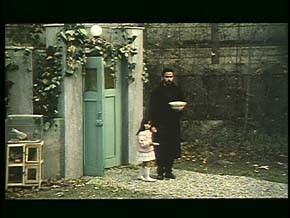
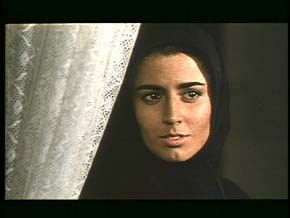
Although there are no special features on this DVD, First Run Features must be congratulated not only for the excellent transfer (the colors especially, with the richly saturated blacks of the chadors, the brightly colored foods, and the red-tinged imagers, are exactly as I remember them when I saw a pristine 35mm print of the film), but for being the first North American company to distribute a film by Mehrjui. Let’s hope that other companies follow suit, or indeed that First Run release one of his many other important works.



